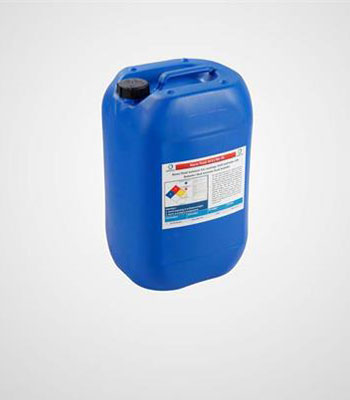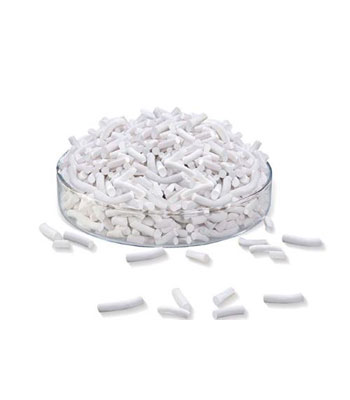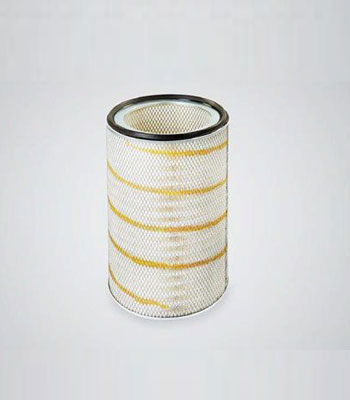Showing 10–18 of 18 results
Nanofluid Coolant for Power Plant
$0.00Introduction
More efficient heat transfer systems are increasingly preferred because of the accelerating miniaturization, on the one hand, and the ever-increasing heat flux, on the other hand. The poor heat transfer properties of the common fluids like water compared to most solids is a primary obstacle to the high compactness and effectiveness of heat exchangers. Passive enhancement methods such as enhanced surfaces are often employed in thermo-fluid systems. Therefore, the development of advanced heat transfer fluids with higher thermal conductivity and improved heat transfer is in strong demand. Nanofluids are heat transfer liquids with dispersed nanoparticles. The effectiveness of heat transfer enhancement has been found to be dependent on the amount of dispersed particle, material type, particle shape, etc.
Nanofluid Coolant for Power Plant
$0.00Introduction
More efficient heat transfer systems are increasingly preferred because of the accelerating miniaturization, on the one hand, and the ever-increasing heat flux, on the other hand. The poor heat transfer properties of the common fluids like water compared to most solids is a primary obstacle to the high compactness and effectiveness of heat exchangers. Passive enhancement methods such as enhanced surfaces are often employed in thermo-fluid systems. Therefore, the development of advanced heat transfer fluids with higher thermal conductivity and improved heat transfer is in strong demand. Nanofluids are heat transfer liquids with dispersed nanoparticles. The effectiveness of heat transfer enhancement has been found to be dependent on the amount of dispersed particle, material type, particle shape, etc.
Nanofluid Coolant for Power Plant
$0.00Introduction
More efficient heat transfer systems are increasingly preferred because of the accelerating miniaturization, on the one hand, and the ever-increasing heat flux, on the other hand. The poor heat transfer properties of the common fluids like water compared to most solids is a primary obstacle to the high compactness and effectiveness of heat exchangers. Passive enhancement methods such as enhanced surfaces are often employed in thermo-fluid systems. Therefore, the development of advanced heat transfer fluids with higher thermal conductivity and improved heat transfer is in strong demand. Nanofluids are heat transfer liquids with dispersed nanoparticles. The effectiveness of heat transfer enhancement has been found to be dependent on the amount of dispersed particle, material type, particle shape, etc.
Naphtha Reforming Nanocatalyst for CCR unit
$0.00Introduction
Catalytic reforming is a major conversion process in petroleum refinery which converts low octane naphthas into higher octane reformate products for gasoline blending and aromatic rich reformate for aromatic production. To perform the process correctly and efficiently, as well as to prevent coke making, the process structure and catalyst must be selected optimally. The efficient structure of the reforming reactors is continues catalytic reforming (CCR). In this process the catalyst is key component. The γ–alumina based catalyst is amongst the catalysts that has a long history in catalytic reforming. In naphtha reforming, γ–alumina is responsible for acidic interactions; moreover, the dehydrogenation reactions are performed by some metals which are impregnated to the catalyst. Therefore, alumina-based catalyst is a very suitable candidate for catalytic reforming.
Naphtha Reforming Nanocatalyst for CCR unit
$0.00Introduction
Catalytic reforming is a major conversion process in petroleum refinery which converts low octane naphthas into higher octane reformate products for gasoline blending and aromatic rich reformate for aromatic production. To perform the process correctly and efficiently, as well as to prevent coke making, the process structure and catalyst must be selected optimally. The efficient structure of the reforming reactors is continues catalytic reforming (CCR). In this process the catalyst is key component. The γ–alumina based catalyst is amongst the catalysts that has a long history in catalytic reforming. In naphtha reforming, γ–alumina is responsible for acidic interactions; moreover, the dehydrogenation reactions are performed by some metals which are impregnated to the catalyst. Therefore, alumina-based catalyst is a very suitable candidate for catalytic reforming.
Naphtha Reforming Nanocatalyst for CCR unit
$0.00Introduction
Catalytic reforming is a major conversion process in petroleum refinery which converts low octane naphthas into higher octane reformate products for gasoline blending and aromatic rich reformate for aromatic production. To perform the process correctly and efficiently, as well as to prevent coke making, the process structure and catalyst must be selected optimally. The efficient structure of the reforming reactors is continues catalytic reforming (CCR). In this process the catalyst is key component. The γ–alumina based catalyst is amongst the catalysts that has a long history in catalytic reforming. In naphtha reforming, γ–alumina is responsible for acidic interactions; moreover, the dehydrogenation reactions are performed by some metals which are impregnated to the catalyst. Therefore, alumina-based catalyst is a very suitable candidate for catalytic reforming.
Turbine Inlet Air Filter
$0.00Introduction
Air filters are used to prevent damage to power plant equipment through dust particles, contaminants and other harmful particles in the air. The main goal is the maximum absorption of dust particles from the air. Nanofibers with lower thickness and higher specific surface area than that of conventional fibers have many applications in filtration and electrospinning is the most efficient process for production of continuous fibers from synthetic or natural polymers. Electrospinning is used to improve the performance and efficiency of the filter. This technology while increases the efficiency of dust absorption, avoid high pressure drop. Fibers produced by electrospinning have a diameter of less than 100 nm and cover the surface of the filter paper uniformly.
Turbine Inlet Air Filter
$0.00Introduction
Air filters are used to prevent damage to power plant equipment through dust particles, contaminants and other harmful particles in the air. The main goal is the maximum absorption of dust particles from the air. Nanofibers with lower thickness and higher specific surface area than that of conventional fibers have many applications in filtration and electrospinning is the most efficient process for production of continuous fibers from synthetic or natural polymers. Electrospinning is used to improve the performance and efficiency of the filter. This technology while increases the efficiency of dust absorption, avoid high pressure drop. Fibers produced by electrospinning have a diameter of less than 100 nm and cover the surface of the filter paper uniformly.
Turbine Inlet Air Filter
$0.00Introduction
Air filters are used to prevent damage to power plant equipment through dust particles, contaminants and other harmful particles in the air. The main goal is the maximum absorption of dust particles from the air. Nanofibers with lower thickness and higher specific surface area than that of conventional fibers have many applications in filtration and electrospinning is the most efficient process for production of continuous fibers from synthetic or natural polymers. Electrospinning is used to improve the performance and efficiency of the filter. This technology while increases the efficiency of dust absorption, avoid high pressure drop. Fibers produced by electrospinning have a diameter of less than 100 nm and cover the surface of the filter paper uniformly.





